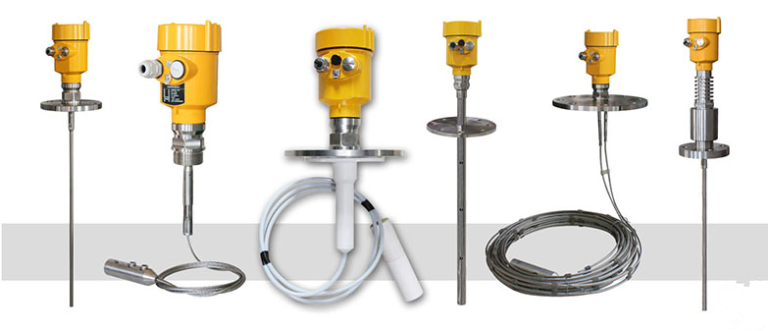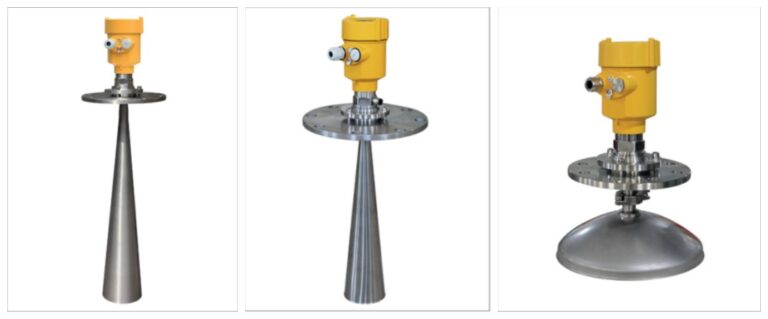A guided wave radar level meter is a contact level meter, i.e. how high the level of the tank (bin), the length of the guided wave cable is also how long, in the tank (bin) installation fixed problems, and the cable is subjected to a lot of tension, it is easy to cause the cable to pull off the accident, so that the system failure and parking, so, in the powder level measurement generally do not choose guided wave radar level meter.
The most common contact techniques used to measure bulk solids levels include: weighted hammer detection (YO-YO), guided wave radar (TDR) or capacitive, contact level instruments are often susceptible to hang-ups (no alarms, false alarms, or switch point changes); fluctuations (sometimes requiring a stabilization procedure); cable breakage (below specified cable tensile strength); top collapse (above specified cable tensile strength); mechanical wear and tear (sometimes requiring a stabilization procedure); and cable breakage (below specified cable tensile strength). mechanical wear (YO-YO with motor drive and limit switches); abrasion (wear of electrodes or cables, especially contact surfaces); change of medium (capacitance for low dielectric constants)

Non-contact technology overcomes the problems mentioned above by offering simpler operation and installation without the need for special physical configurations to match the measurement range. However, non-contact antenna type radar level meters are not well suited to the following applications, where contact-guided wave radar can be well suited.
1, in the low permittivity of the material to be measured
2, in small spaces, or complex structures in the tank, resulting in complex echoes, difficult to identify the occasion
3、Powdered solid level measurement with very low permittivity
4、High temperature, high-pressure conditions (liquid)
5、Liquid-liquid interface measurement

Overall in terms of advantages, contact avoids obstructions and allows the measurement of materials with small dielectric constants. Non-contact has little or no adhesion, no moving parts, low risk of contamination, simple installation, and little or no maintenance.
On the downside contact media adhesion, problems with cable wear, top collapse, wear of moving parts, susceptibility to corrosion, and also susceptibility to changes in the media. Non-contact, on the other hand, has a wider beam.
You should have read this far to understand the difference between the two, I am sure that the heart for the choice of which radar level meter has a judgment.
